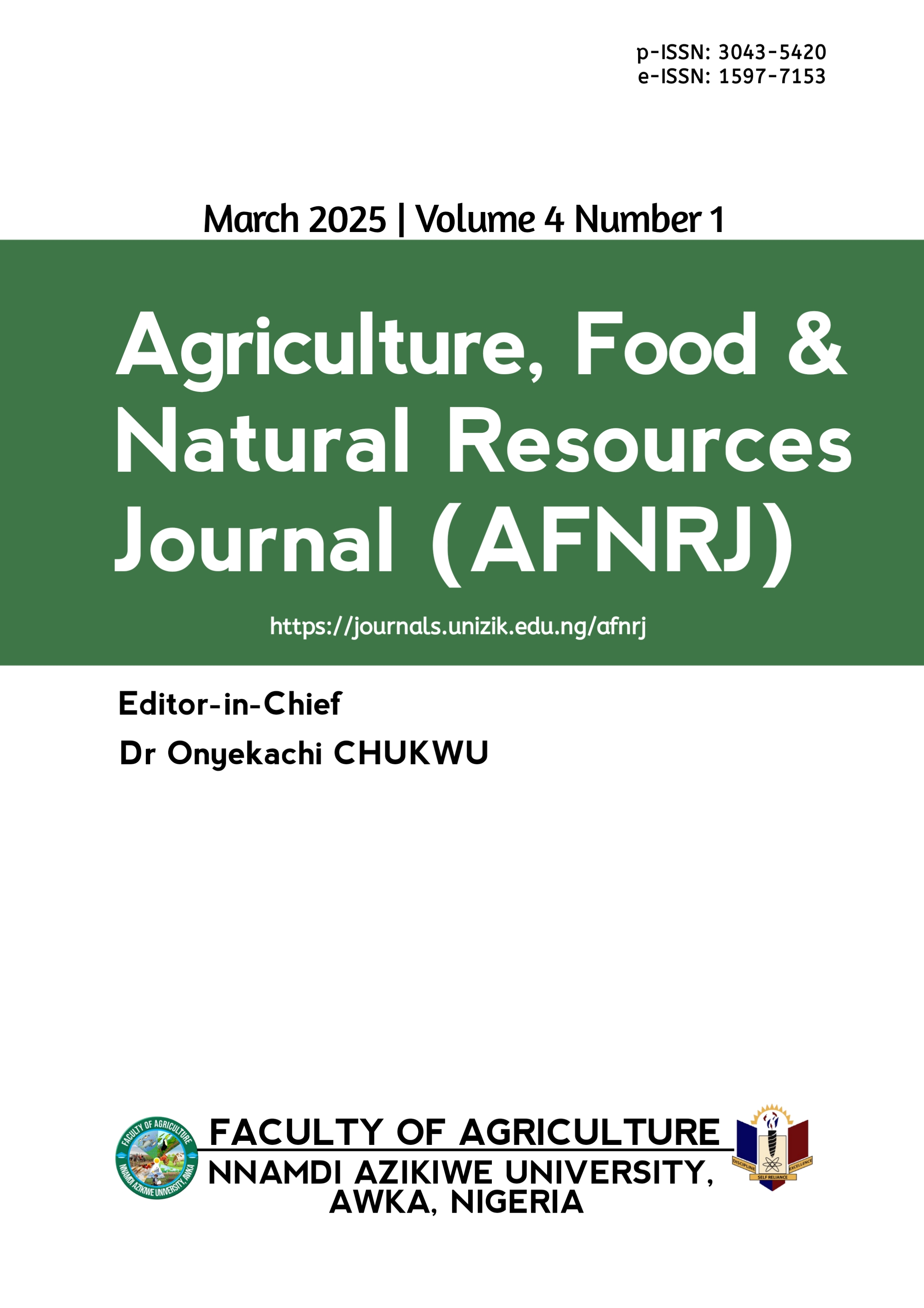Impact of integrated soil nutrient sources on the growth and yield of sorghum raised in Rigachikun, Kaduna State, Nigeria
DOI:
https://doi.org/10.5281/zenodo.15109572Keywords:
Fertilizer, Sorghum, Nutrient, ManureAbstract
This study evaluated the effects of different soil nutrient sources on the growth and yield of sorghum under rain-fed conditions during the 2023 and 2024 cropping seasons. Research was conducted at the National Open University of Nigeria Research Farm, Rigachikun, Kaduna. The experiment comprised fourteen treatments: (I) Control, (II) Soybean intercrop, (III) 2.0 t/ha of poultry manure (PM), (IV) 2.0 t/ha of PM + Soybean, (V) 3.5 t/ha of PM, (VI) 3.5 t/ha of PM + Soybean, (VII) 0.2 t/ha of compost manure (CP), (VIII) 0.2 t/ha of CP + Soybean, (IX) 0.4 t/ha of CP, (X) 0.4 t/ha of CP + Soybean, (XI) 30 kg N/ha of NPK fertilizer, (XII) 30 kg N/ha + Soybean, (XIII) 60 kg N/ha, and (XIV) 60 kg N/ha + Soybean. A Randomized Complete Block Design (RCBD) with three replications was employed. The study demonstrated that integrated soil nutrient management significantly influences the growth and yield of sorghum. Sole applications of compost manure at 0.4 t/ha (IX) improved leaf area. However, soybean intercropping (II, IV, VI, VIII, X, XII, and XIV) did not have a significant effect on sorghum growth variables. The highest grain yield was recorded in plots treated with 60 kg N/ha of NPK fertilizer intercropped with soybean (XIV), though this was not significantly different from plots treated with 60 kg N/ha of NPK fertilizer without soybean (XIII). Given its positive impact on growth and yield, the application of poultry manure should be promoted, especially among smallholder farmers looking for sustainable nutrient sources.
Downloads
Published
Issue
Section
License

This work is licensed under a Creative Commons Attribution 4.0 International License.
which permits unrestricted use, distribution, and reproduction in any medium, provided the original author and source are credited.
Authors retain the copyright of their published work in the AFNRJ.





